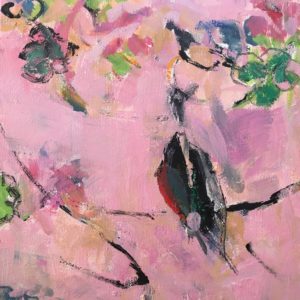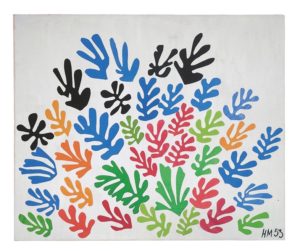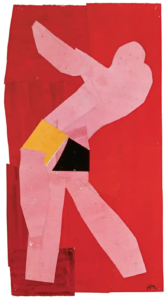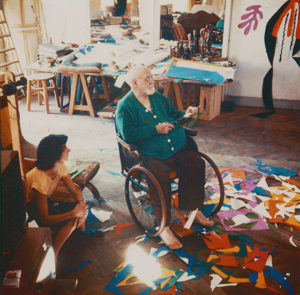Dear Artist,
While waiting for my annual mammogram yesterday, I thumbed through a back issue of The New Yorker magazine and found Ariel Levy’s essay on the comparative religion of parenting. According to one sect, babies are like plants; they don’t require instruction to develop as nature intended – including motor skills, walking, sleeping, speaking, eating, communicating and even managing their emotions. Apparently, they need only for us to get out of their way.
In 1946, Dr. Emmi Pikler, a Viennese pediatrician and author of the 1940 treatise, Peaceful Babies — Contented Mothers, was enlisted to set up an orphanage for children who’d lost their parents in the Second World War. There, she activated a child-rearing philosophy that favoured adult-level trust over invasive attention, authoritarianism, excessive coddling or hyper-efficiency. She fired the pedagogical nurses, hired local villagers and trained them to treat the babies with “ceremonious slowness.” By 1957, Dr. Pikler’s method of low interference and respectfulness was being disseminated by enthusiasts in California.
I wondered if Pikler’s system, if applied to creativity, could produce more emotionally secure and self-sufficient artists. For example, strict boundaries, enforced with confidence, are what enable children to relax. I’ve noticed that deadlines, self-imposed or show-generated, can produce a dance floor where I’m free to dream up and exhaust the possibilities of current explorations. “I play better tennis because the court is there,” wrote Robert Frost of his beloved metric pattern. Janet Lansbury, a contemporary California educator of the Pikler method, suggests to the nearly one million listeners of her parenting podcast, Unruffled, to “try, for just one day, to pretend that everything you say to your child, every decision you make, is absolutely perfect.” I think it has something to do with not letting your kids smell your fear, lest they catch it. Similarly, when it comes to art, or what we dream for it, as the new-thought adage goes, “What would you attempt if you knew you could not fail?” Daily, I’m trying to grasp and harness a belief that there is no danger in what I am trying to attempt in life, if only just to understand what could be possible, creatively. If our child were our art – if our child were us – have we the courage to let her develop, free from the poison of our haggard ideas on how the world works, how love or acceptability are gained, what assistance or achievement look like, or what the system wants of her?
Sincerely,
Sara
PS: “Usually, if they can get there, they can get down from there.” (Janet Lansbury, author, podcaster and parent educator of Dr. Emmi Pikler’s Resources for Infant Educarers.)
Esoterica: Contemporary protégées of Dr. Pikler encourage parents to eschew the modern American tragedy of “helicoptering” – or worse, “bulldozering” – plowing away obstacles, rendering children gritless and devoid of problem-solving skills – and instead reframe their role as merely a “stable base” from which children can leave and return to. Trusting your child to climb a jungle gym and then get down from it on their own, for example, is an opportunity to truly see her as an individual of agency, managing risk and discovering solutions. “If you just believe in yourself, and believe in the method,” says Lansbury, “then your child will believe in you, too, and everyone can relax.” “All parenting is a faith-based initiative,” wrote Ariel Levy. So too, is art.
Have you considered a Premium Artist Listing? With each letter, an artist is featured at the bottom of this page. The Premium Artist Listings are a means of connecting artist subscribers through their work. Proceeds from each listing contribute to the production of The Painter’s Keys.
“Loving children doesn’t give them a destination. It gives them sustenance for the journey.” (Alison Gopnik)
Featured Workshop
 Permission to Paint Expressively Series Session 2
Permission to Paint Expressively Series Session 2
August 22-25, 2022
Join Ellie Harold for “Expressive Painting: Making Your Marks.” With a focus on intuitive mark-making, this workshop is designed to facilitate a fuller expression of your deepest and most essential artist Self. Content, process and lightly structured exercises give you permission to create the art that wants to be made by you in the safe space of Ellie’s studio and the fresh air and cool light of northern Michigan near Sleeping Bear Dunes. You’ll return home with a specific art “care plan” to assure support for “Making Your Marks” in the world. Details and registration at www.EllieHarold.com.
Featured Artist
I am inspired by the drama of light as it moves along forms, the rhythms and nuances of shapes, and the colours that change from subtle to vivid at any give moment. My expressive compositions, in oils, acrylics or watercolours, are a contemplative and heartfelt response to my experiences, representing the “visual music” I feel. Each brush-stroke is like a colour note or chord playing out the scene offering a connection with the viewer through dynamic movements and vibrant colour.









19 Comments
Sooooo good!! Thank you!
Most artists hate deadlines and the pressure associated with it, but I think the point here is well taken, that structure and deadlines actually free us up. Thank you for this. Well done.
This is wonderful advice for chid-rearing but also for artists. Learn th e basic rules of Art but then allow ourselves to exert our own personalities to produce art without shackles ! Peter Voig, now world -renowned contemporary artists recalls when other artists refused to be shown with him. That was before he won the coveted Turner Prize..the rest is history. He deplores nostalgia but welcomes memory as Inspiration for theme.
Doug is being claimed as Scottish-born though his parents left the country with him at three years of age. He spent most of his growing up years in and across Canada., and now lives in Trinidad and Germany. There is an artist who feels free to express himself combining figurative and landscape elements that sometimes evoke a story or memory.
do you mean Peter Doig?
Great letter. I’m going to put up your phrase, “What would you attempt if you knew you could not fail?,” in my studio on the wall. Many projects where only fear of failure (and wasting time on something that would likely not appeal to buyers) are keeping me from trying.
It’s not the end result that I have in mind when I paint or sculpt, it’s the process that brings enjoyment. If it sells,..then bonus!
I just added a weekly reminder pop-up in my calendar. This is the essence of appreciative inquiry. “What would you attempt if you knew you could not fail?”
I studied with Magda Gerber many yrs. ago in L.A. a student of Dr. Pikler. Then after becoming a clinical social worker my area of focus was working with parents and caregivers of infants 0-3yrs. After leaving my social work career I returned to art. This newsletter is the first time both sides of my work has been brought together so clearly. Thank you.
Thank you for this reminder. Age 71
“All parenting is a faith-based initiative.” “What would you attempt if you knew you could not fail?” “Usually, if they can get (up) there, they can get down from there.” Usually? That’s a pretty broad caveat with which to preface such a sweeping generalization. Ever seen a cat get itself stuck high up in a tree? Traditionally, that narrative ends with the necessary participation of the local Fire Department. Meanwhile, there’s also the old, somewhat amusing anecdote about the puppy that grew up thinking its name was ‘No’. It’s all well and good to talk about faith, confidence and ambition, but many parents seem unaware that their children have an imagination beyond their own. They appear to believe that their children *only* know what they have been told. I didn’t start painting untill well after both my parents were gone. They didn’t “pass”, they died. I have, of course, not heard from either of them since. Some friends once asked me: Why have you never married? My immediate answer was simple: My parents were married.
Love this. Grandma mode enters the studio. So does my granddaughter. We work together sometimes, and sometimes side by side.
The parenting of paintings – a good thought! I have often considered my paintings as children-as part of self, and a gift. And the dimensions of the canvas as a tennis court…to play!
Play is complex learning and an important part, in which we practice Faith, and experience that we too can learn from our children…and our art.
Another great letter, Sara, thank you!
I adore my paintings when they are early in their growth (children) and want to throw them out of the house when they become like teenagers – difficult to manage, and often ugly. But then I persevere, and the paintings grow into adults, ready to go out and face the world.
Denise, I have often thought of my paintings in the way you describe. I tell myself, “they need to go through the teenage phase in order to become beautiful adults” haha. First time I’ve heard (read) anyone else say basically the same thing, veyr cool. :)
Even though I don’t have children myself, I really value your post. It informs my (better) understanding of my own childhood and the rearing, expectations and rigidity that coloured those years. Parenting is tricky business! But faith – in parenting or art-making – is a lifetime’s journey of awareness and (re-)awakening.
I love this so much.
And thank you for cleaning my wings.
Really great letter Sara, again. I learned the other day that a friend said to her husband that I feel maternal towards my paintings. I was advising how to frame it, differently to their thoughts. Not having children I was surprised by the comment and touched. Now I think I was exhibiting control! Ha ha. Thank you Sara. X
This is a real keeper. Thanks for taking your time to share your insightful thoughts.
It’s fascinating how Dr. Emmi Pikler’s child-rearing philosophy prioritizes trust and independence. The concept of “ceremonious slowness” in caregiving is a refreshing perspective that encourages respecting a child’s moto x3m autonomy and natural development process.